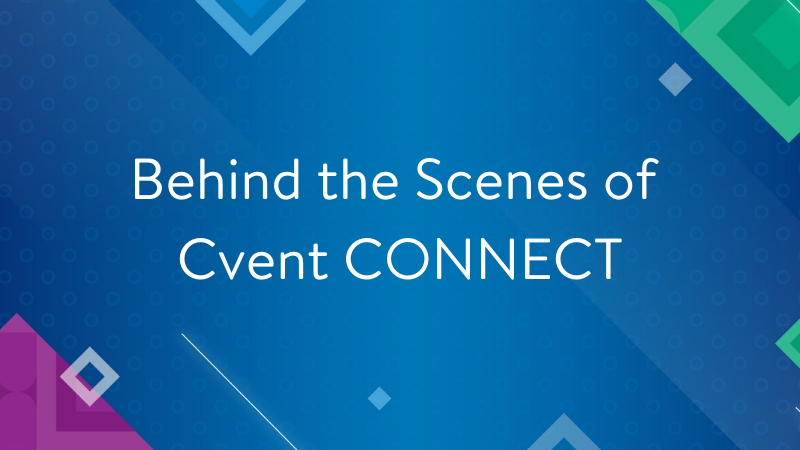In this third Behind the Scenes of Cvent CONNECT Virtual blog post, we wanted to share some best practices for the design and production of your virtual event. As we’ve mentioned, the decision to pivot our in-person annual event to a virtual setting was a very nerve-wracking one. There was one thing we wanted to make absolutely certain of – that the professional, high-quality production our attendees expected from our onsite Cvent CONNECT conference transferred flawlessly to a virtual platform. Below, we walk through how we created a superior and engaging virtual conference.
Research, then research some more
The first step to creating a first-class event was to conduct a LOT of research. We chatted with our clients who pivoted their own events to virtual. We analyzed the production of late-night talk shows, the NFL draft, online fitness classes, and more. While the world of virtual events can be daunting, we had to look at this as an exciting creative challenge. Studying these various shows and programs helped open our eyes to all the possibilities that the virtual world has to offer.
Choosing your production technology
To deliver a high-quality virtual event, you will need high-quality technology. In our case, we were very fortunate that our own Cvent platform happened to handle the three essential virtual production elements:
- Virtual Platform
- Video Player
- Production Support
To bring the production and design to the next level, we also partnered with renowned production agency Ovation Events.
Matching your programming & production
Finally, you will want to match up your various programs with the most suitable level of production. For example, it might not make sense to have an emcee and broadcast-quality lighting for a breakout session, but this would really add to a keynote presentation. Take a look at your session types and set-ups and cater your production levels to them. For example, our general sessions required a professional look-and-feel. A high level of production was essential, and these sessions needed a controlled environment, similar to a webinar.
There is also the decision of hosting live versus pre-recorded sessions. This was quite the debate. With a live session, attendees have the adrenaline and excitement that they would receive at an onsite event. However, with a live session, you do have to worry about risk management and support resources that you wouldn’t have to deal with during a pre-recorded session. To strike a good balance, we decided to host about 25% of our sessions live.
In some cases, we even had to marry the two types of sessions together. For example, our Awards Show had elements for remote presenting and in-house studio presentation. This provides some interest for the viewer since no one wants to see the same production for every session.
Strike the right balance
When your attendees are used to your in-person event being professional, high-quality, and impressive, it can be quite daunting to pivot this expectation to a virtual setting. However, by finding the right virtual technology, implementing the best production services, and striking the right balance of production levels, you can create a virtual event that is just as engaging in design as its in-person counterpart.
Common questions asked about virtual event design and production
What was the biggest learning, specifically with live session delivery?
The biggest thing we learned is to always have a contingency plan. Especially with live sessions, it's essential to have back-up producers for sessions, and even back-up recordings of sessions in case you run into any technical difficulties.
What was the percent increase in cost of delivering a live session vs. on-demand?
The main difference between delivering a live session vs. an on-demand session is the additional personnel needed for a live session. You'll probably have about three people working on a live session, whereas with an on-demand session you may only need one person to monitor it.
How did your studio partner's AV team learn how to use the Attendee Hub software?
Check out the on-demand version of this webinar to hear the answer to this and more questions!








